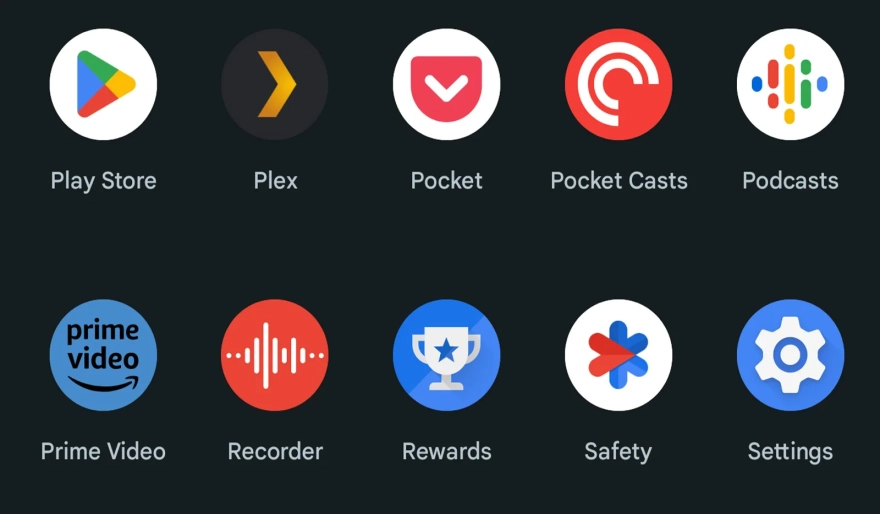Changing Default Apps on Android Devices
9 min read A Comprehensive Guide on Changing Default Apps on Android Devices - written by Adam sanchez , Senior Content Marketer March 02, 2024 13:03
1. Introduction to Default Apps on Android Devices
The idea behind default apps is that it allows for app-freeing creativity and customization. You find a better email app in the Android Market. You download it and start using it, and an unrelated app lets you email a file. It's simpler in open source to make it so that the Android OS just knows to pipe the information over to the new email client without the user having to specify that the OS should do so, every time. This creates a seamless interaction that lets you get back to what you were doing without having to think, "Oh, right, OS, take it to Gmail," or fear ever using other email clients because the change is such a hassle. Plus, the idea that any developer can replace a stock feature by creating something better is just beautiful.
Every Android device comes with a number of pre-installed apps that perform specific functions. These apps include the camera, phone dialer, browser, mail client, and other apps. These apps are known as the "default" apps. The concept of default apps is an interesting one. It describes what happens when you tap a link or perform a file action that involves a particular file type. For example, if you tap on a YouTube link, the YouTube app will open and the video will start playing. If you select a URL in a document, Chrome will open and take you to the webpage. If you select an image, the gallery app will open and display the image. In all these scenarios, a specific app is responding to an intent. Intents always refer to an app which the operating system can send to perform a function.
2. Methods for Changing Default Apps
After the person has successfully changed the default app for each file type, there are some setting updates that they will potentially need to make to ensure that the changes are optimized. They should select the best app for opening files and links, change default programs in a web browser, and manually give access to files and links when it is needed.
There are currently six methods for changing the default app on an Android device. They are the "Open With" menu and clear defaults, the "Open With" menu and "Just Once", clearing the default app's defaults in Application Manager, selecting the default app in Application Manager, resetting app preferences, and using Home Manager. Each method is able to do the job, but how to use and who it is for a person will need to consider how easy and how long it takes to use, the person or people who can use it and if they are able to, the person's preferences, what the advantages and disadvantages of each method are, and if there are any limitations of each method. Additionally, if brute force or trial and error is allowed, SID can use the "Open With" menu and "Just Once", defaults in Application Manager, and the "Open With" menu and clear defaults.
3. Considerations and Best Practices
Determine which aspects of the user experience you want to optimize for and ensure you support setup, visibility, and easy use. If your application achieves any of the operations listed above, it is linked to the default system UI affordance or integrated by users as the source of the system operation. Provide both system and in-app settings to control the defaults; prioritize the application's built-in settings to maximize the simplicity of using the application by using setup wizards and in-app "set as default" dialogs. Summarize the function of your application that will use the custom intent with meaningful actions and/or results compatibility with the same custom action or MIME type. "Content-aware" settings are a powerful way to intelligently use the custom intent and bring your application functionality on and off with minimal impact on the user experience. Add an icon that renders at high resolution on all form factors, considering both feature phone and tablet, and present visually clear, at-a-glance user feedback. In particular, use icons to make system settings informative and easy to use. Provide textual information that helps describe the behavior of the application; use generic, semantic terms that describe the function of the application rather than its function of its package name.
Carefully choose which elements of your application to register default handlers for. Make sure you follow the best practices outlined below to ensure visibility and the best user experience across a variety of devices, resolutions, orientations, and user scenarios.
4. Troubleshooting Common Issues
4. Reset App Preferences Android allows you to modify the default settings during the installation of game, email, and web browsing apps. The settings on the default app sometimes make some of the pre-installed applications not work as they should. (Actually, it is a common problem in internet browsers like Chrome.)
3. App Unexpectedly Crashes and Stops Another problem is that they can suddenly stop the app after I install it. Some traps should be noted and corrected from material settings.
2. Enable Unknown Sources Most apps will be disabled to be installed on your Android device for security reasons if you thought to allow installing apps from anywhere but the Google Play Store. In order to install an app from unknown sources, you need to enable 'Unknown Sources' from the Settings. • Go to Settings on your Android device, and you will see the 'Install unknown apps' setting with apps installed, available from 'Setting'. • Enable the slider for any apps you like, and the 'Unknown apps' message will pop up after a while.
1. App Opens and Slows Down Randomly Many users reported that the app opens from time to time and works slowly during the early usage period. Here are some tips to get some of the most common problems out of the way.
Problems occur from time to time. Sometimes they are caused by temporary issues and quickly get solved on their own, but sometimes they arise from more hidden causes. Let's quickly go through these common issues and their troubleshooting tactics.
User Comments (0)
Popular Apps










Editor's Choice









